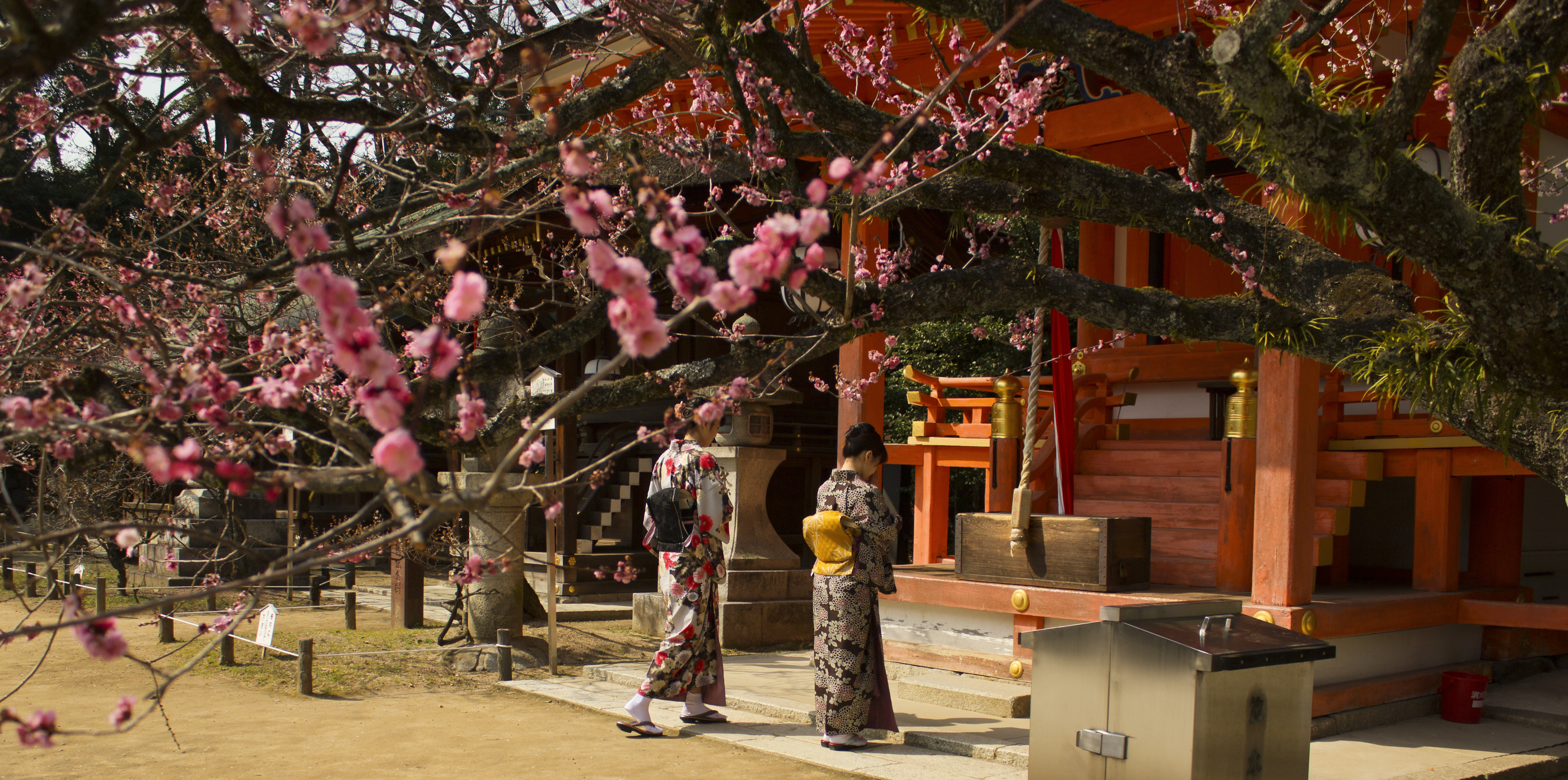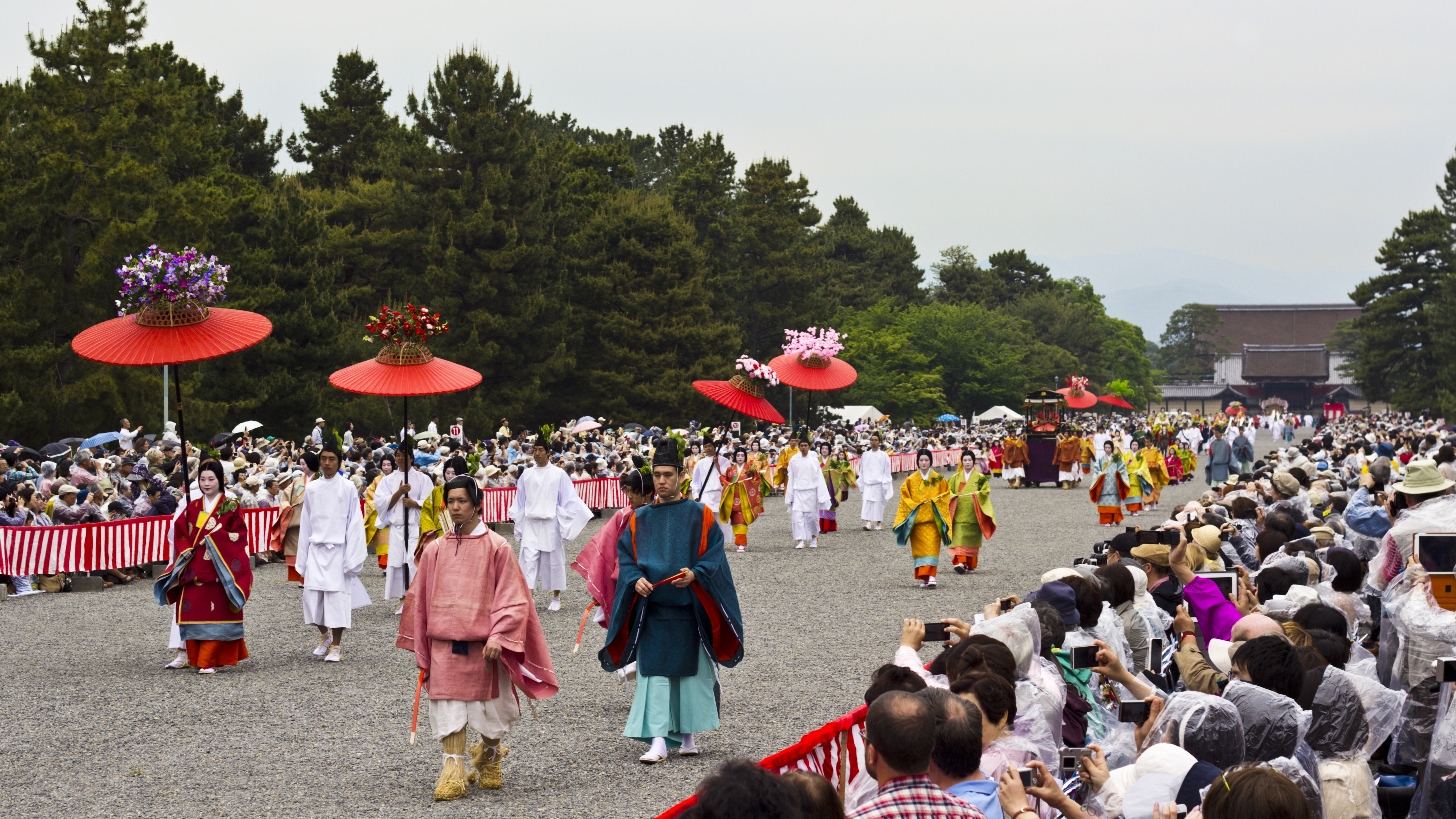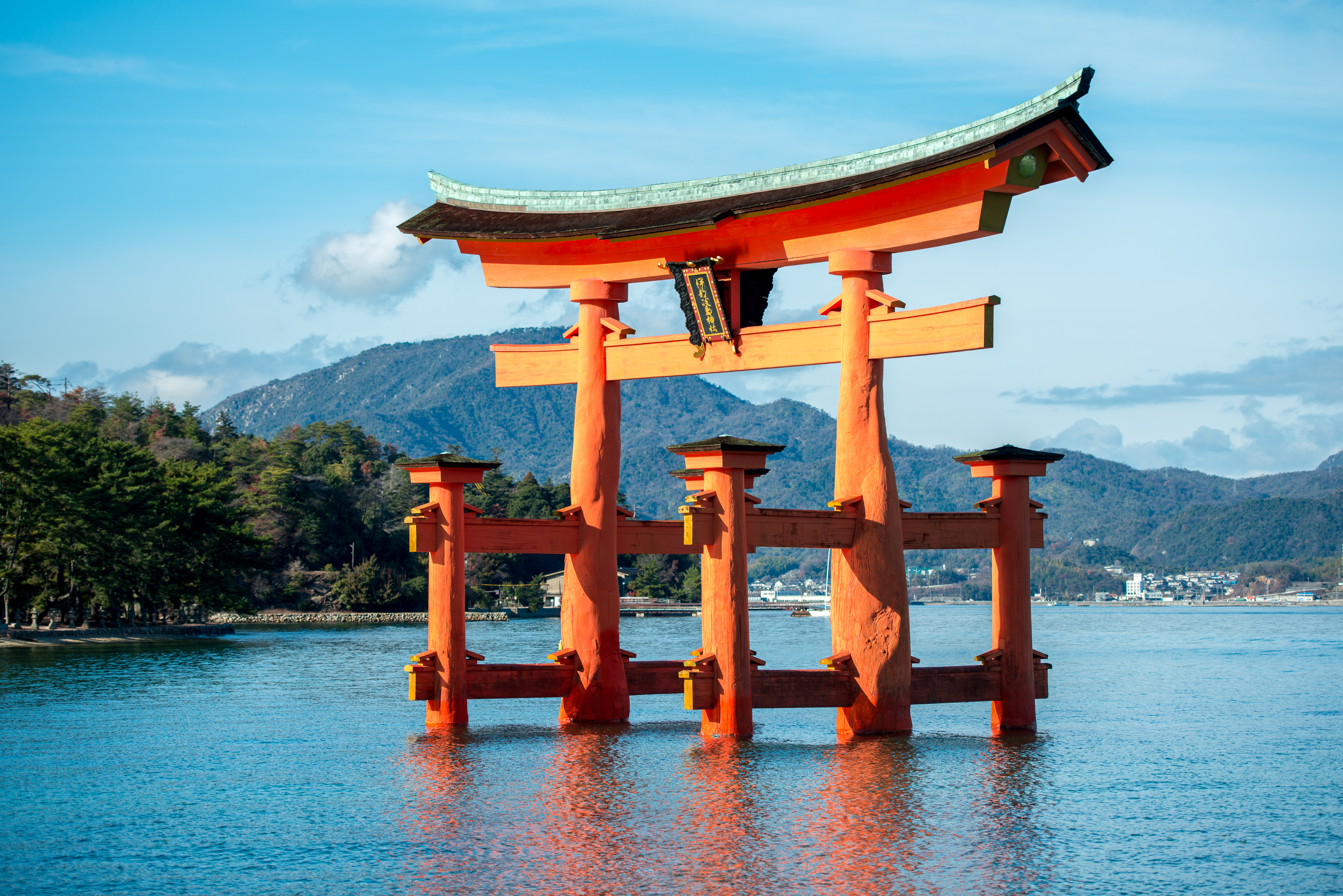|
Mikoshi
A is a sacred religious palanquin (also translated as portable Shinto shrine). Shinto followers believe that it serves as the vehicle to transport a deity in Japan while moving between main shrine and temporary shrine during a festival or when moving to a new shrine. Often, the ''mikoshi'' resembles a miniature building, with pillars, walls, a roof, a veranda and a railing. Often the Japanese honorific prefix is added, making . History The first recorded use of ''mikoshi'' was during the Nara period. Among the first recorded uses was when in the year 749, the deity Hachiman is said to have been carried from Kyushu to Nara to worship the newly-constructed ''Daibutsu'' at Tōdai-ji."Usa City Tourist Navigation" Retrieved 6 June 2024 As the head shrine of all |
Sanja Matsuri
, or Sanja Festival, is one of the three largest Shinto festivals in Tokyo. It is considered one of the wildest and largest in Japan. The festival is held in honor of Hinokuma Hamanari, Hinokuma Takenari, and Hajino Nakatomo, the three men who established and founded the Sensō-ji Buddhist temple. Sanja Matsuri is held on the third weekend of every May at Asakusa Shrine. Its prominent parades revolve around three ''mikoshi'' (the portable shrines referenced in the festival's name), as well as traditional music and dancing. Over the course of three days, the festival attracts 1.5–2 million locals and tourists every year. History Like many Japanese festivals, Sanja Matsuri is a religious celebration, but it is an unusual survival of a cross-faith festival: it is a weekend-long Shinto festival that is dedicated to the ''kami'' (spirits) of three men who founded a Buddhist temple. It is believed that two fishermen—brothers named Hinokuma Hamanari and Hinokuma Takenari—fou ... [...More Info...] [...Related Items...] OR: [Wikipedia] [Google] [Baidu] [Amazon] |
Usa Jingū
, also known as , is a Shinto shrine in the city of Usa in Ōita Prefecture in Japan. Emperor Ojin, who was deified as Hachiman-jin (the tutelary god of warriors), is said to be enshrined in all the sites dedicated to him; and the first and earliest of these was at Usa in the early 8th century.Japan National Tourist Organization (JNTO) Usa-jingū shrine/ref> The Usa Jingū has long been the recipient of Imperial patronage; and its prestige is considered second only to that of Ise. Hardacre, Helen. (1989)''Shinto and the State, 1868-1988,'' p. 12./ref> History The shrine was founded in Kyushu during the Nara period. Ancient records place the foundation of Usa Jingū in the Wadō era (708–714).Ponsonby-Fane, Richard. (1962). ''Studies in Shinto and Shrines,'' p. 195. A temple called Miroku-ji (弥勒寺) was built next to it in 779, making it what is believed to be the first shrine-temple ('' jingū-ji'') ever. The resulting mixed complex, called , lasted over a millennium u ... [...More Info...] [...Related Items...] OR: [Wikipedia] [Google] [Baidu] [Amazon] |
Hiyoshi-taisha Juge-jinja-haiden02n4592
is a Shinto shrine located in the city of Ōtsu, Shiga Prefecture Japan. This shrine is one of the Twenty-Two Shrines. Known before World War II as or Hie jinja, "Hiyoshi" is now the preferred spelling. It was also known as the . The head shrine in Ōtsu heads the seventh largest shrine network in Japan, with approximately 3800 Hiyoshi, Hie, and Sannō shrines nationwide. Torii of this shrine have a distinctive configuration, known as the " Sannō torii", with a gaggle above the main crossbeam. The 400,000 square meter precincts centered is designated as a National Historic Site, and the east and west main shrine buildings, the and are designated as National Treasures, and many of the structures in the precincts are designated as National Important Cultural Properties. Enshrined ''kami'' ;Main shrine * Nishi Hongū: * Higashi Hongū: ;Subsidiary shrines * Ushio-gū: * Juge Jinja: * Sannomiya-gū: * Usa-gū: * Shirayama-gū: History The first mention of the ... [...More Info...] [...Related Items...] OR: [Wikipedia] [Google] [Baidu] [Amazon] |
Shinto Shrine
A Stuart D. B. Picken, 1994. p. xxiii is a structure whose main purpose is to house ("enshrine") one or more kami, , the deities of the Shinto religion. The Also called the . is where a shrine's patron is or are enshrined.Iwanami Japanese dictionary The may be absent in cases where a shrine stands on or near a sacred mountain, tree, or other object which can be worshipped directly or in cases where a shrine possesses either an altar-like structure, called a himorogi, , or an object believed to be capable of attracting spirits, called a yorishiro, , which can also serve as direct bonds to a . There may be a and other structures as well. Although only one word ("shrine") is used in English, in Japanese, Shinto shrines may carry any one of many different, non-equivalent names like , , , , , , , , , or . Miniature shrines (hokora, ) can occasionally be found on roadsides. Large shrines sometimes have on their precincts miniature shrines, or . Because the and once had differe ... [...More Info...] [...Related Items...] OR: [Wikipedia] [Google] [Baidu] [Amazon] |
Ōita Prefecture
is a prefecture of Japan located on the island of Kyūshū. Ōita Prefecture has a population of 1,081,646 (1 February 2025) and has a geographic area of 6,340 km2 (2,448 sq mi). Ōita Prefecture borders Fukuoka Prefecture to the northwest, Kumamoto Prefecture to the southwest, and Miyazaki Prefecture to the south. Ōita is the capital and largest city of Ōita Prefecture, with other major cities including Beppu, Nakatsu, and Saiki. Ōita Prefecture is located in the northeast of Kyūshū on the Bungo Channel, connecting the Pacific Ocean and Seto Inland Sea, across from Ehime Prefecture on the island of Shikoku. Ōita Prefecture is famous for its hot springs and is a popular tourist destination in Japan for its ''onsen'' and '' ryokan'', particularly in and around the city of Beppu. It has more ''onsen'' than any other Japanese prefecture. History Around the 6th century, Kyushu consisted of four regions: Tsukushi Province, Hi Province, Kumaso Province and Toyo P ... [...More Info...] [...Related Items...] OR: [Wikipedia] [Google] [Baidu] [Amazon] |
Matsuri
Japanese festivals, or , are traditional festive occasions often celebrated with dance and music in Japan. The origin of the word ''matsuri'' is related to the ; there are theories that the word ''matsuri'' is derived from meaning "to wait (for the ''kami'' to descend)", meaning "to make offerings to the ''kami''", and meaning "to obey the ''kami''". The theory that it is derived from ''matsurau'' is the most popular. It is estimated that there are between 100,000 and 300,000 festivals across Japan, generating an annual economic impact of 530 billion yen as of 2019. As of 2024, 33 of these festivals have been registered as UNESCO Intangible Cultural Heritage Lists as "Yama, Hoko, Yatai, float festivals in Japan". Various folk dances, costume processions, '' kagura'', '' dengaku'', '' bugaku'', and '' noh'' performed at festivals are also registered as UNESCO Intangible Cultural Heritage Lists. For example, 41 folk dances including ''bon odori'' from various regions of Japan are ... [...More Info...] [...Related Items...] OR: [Wikipedia] [Google] [Baidu] [Amazon] |
Shinto
, also called Shintoism, is a religion originating in Japan. Classified as an East Asian religions, East Asian religion by Religious studies, scholars of religion, it is often regarded by its practitioners as Japan's indigenous religion and as a nature religion. Scholars sometimes call its practitioners ''Shintoists'', although adherents rarely use that term themselves. With no central authority in control of Shinto, there is much diversity of belief and practice evident among practitioners. A polytheism, polytheistic and animism, animistic religion, Shinto revolves around supernatural entities called the (神). The are believed to inhabit all things, including forces of nature and prominent landscape locations. The are worshipped at household shrines, family shrines, and Shinto shrine, ''jinja'' public shrines. The latter are staffed by priests, known as , who oversee offerings of food and drink to the specific enshrined at that location. This is done to cultivate harmony ... [...More Info...] [...Related Items...] OR: [Wikipedia] [Google] [Baidu] [Amazon] |
Kyushu
is the third-largest island of Japan's Japanese archipelago, four main islands and the most southerly of the four largest islands (i.e. excluding Okinawa Island, Okinawa and the other Ryukyu Islands, Ryukyu (''Nansei'') Ryukyu Islands, Islands). In the past, it has been known as , and . The historical regional name referred to Kyushu and its surrounding islands. Kyushu has a land area of and a population of 14,311,224 in 2018. In ancient times, there is a theory that Kyushu was home to its own independent dynasty, where a unique, southern-influenced culture and tradition distinct from that of Honshu flourished. In the 8th-century Taihō Code reforms, Dazaifu (government), Dazaifu was established as a special administrative term for the region. Geography The island is mountainous, and Japan's most active volcano, Mount Aso at , is on Kyūshū. There are many other signs of tectonic activity, including numerous areas of hot springs. The most famous of these are in Beppu, ... [...More Info...] [...Related Items...] OR: [Wikipedia] [Google] [Baidu] [Amazon] |
Kami
are the Deity, deities, Divinity, divinities, Spirit (supernatural entity), spirits, mythological, spiritual, or natural phenomena that are venerated in the traditional Shinto religion of Japan. ''Kami'' can be elements of the landscape, forces of nature, beings and the qualities that these beings express, and/or the spirits of venerated dead people. Many ''kami'' are considered the ancient ancestors of entire Japanese clans, clans (some ancestors became ''kami'' upon their death if they were able to embody the values and virtues of ''kami'' in life). Traditionally, great leaders like the Emperor of Japan, Emperor could be or became ''kami''. In Shinto, ''kami'' are not separate from nature, but are of nature, possessing positive and negative, and good and evil characteristics. They are manifestations of , the interconnecting energy of the universe, and are considered exemplary of what humanity should strive towards. ''Kami'' are believed to be "hidden" from this world, and in ... [...More Info...] [...Related Items...] OR: [Wikipedia] [Google] [Baidu] [Amazon] |
Kanagawa
is a Prefectures of Japan, prefecture of Japan located in the Kantō region of Honshu. Kanagawa Prefecture is the List of Japanese prefectures by population, second-most populous prefecture of Japan at 9,221,129 (1 April 2022) and third-densest at . Its geographic area of makes it fifth-smallest. Kanagawa Prefecture borders Tokyo to the north, Yamanashi Prefecture to the northwest and Shizuoka Prefecture to the west. Yokohama is the capital and largest city of Kanagawa Prefecture and the List of cities in Japan, second-largest city in Japan, with other major cities including Kawasaki, Kanagawa, Kawasaki, Sagamihara, and Fujisawa, Kanagawa, Fujisawa. Kanagawa Prefecture is located on Japan's eastern Pacific coast on Tokyo Bay and Sagami Bay, separated by the Miura Peninsula, across from Chiba Prefecture on the Bōsō Peninsula. Kanagawa Prefecture is part of the Greater Tokyo Area, the most populous metropolitan area in the world, with Yokohama and many of its cities being ma ... [...More Info...] [...Related Items...] OR: [Wikipedia] [Google] [Baidu] [Amazon] |
Palanquin
The litter is a class of wheelless vehicles, a type of human-powered transport, for the transport of people. Smaller litters may take the form of open chairs or beds carried by two or more carriers, some being enclosed for protection from the elements. Larger litters, for example those of the Emperor of China, Chinese emperors, may resemble small rooms upon a platform borne upon the shoulders of a dozen or more people. To most efficiently carry a litter, porters either place the carrying poles directly upon their shoulders or use a yoke to transfer the load from the carrying poles to the shoulders. Definitions A simple litter consists of a Sling (furniture), sling attached along its length to poles or stretched inside a frame. The poles or frame are carried by porters in front and behind. Such simple litters are common on battlefields and emergency situations, where terrain prohibits wheeled vehicles from carrying away the dead and wounded. Litters can also be created quickly b ... [...More Info...] [...Related Items...] OR: [Wikipedia] [Google] [Baidu] [Amazon] |









